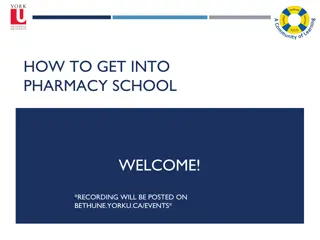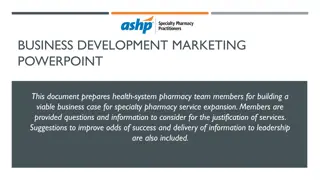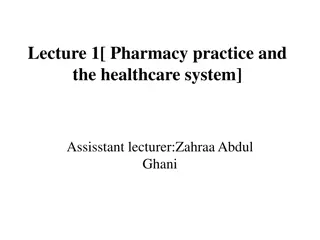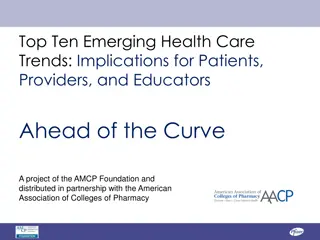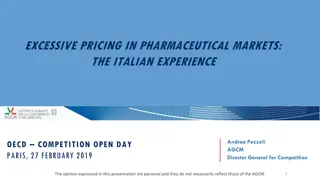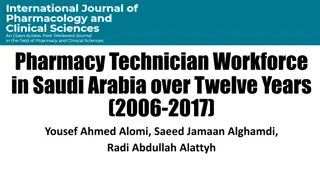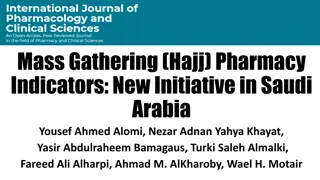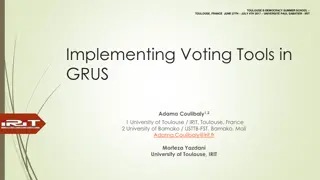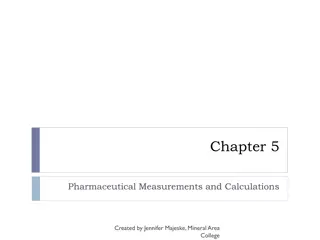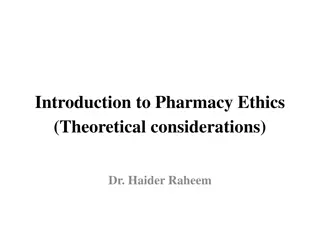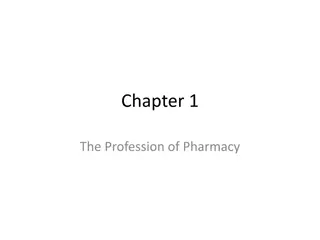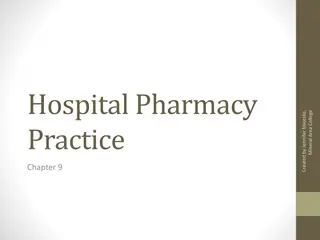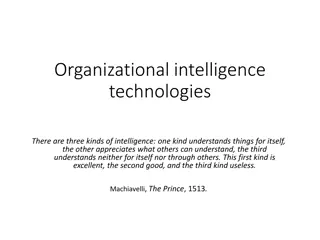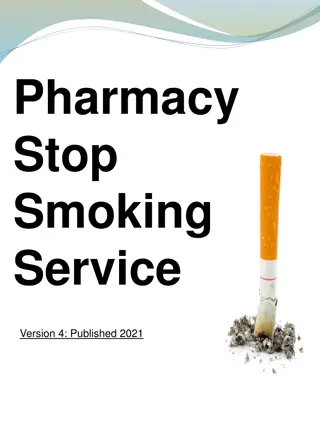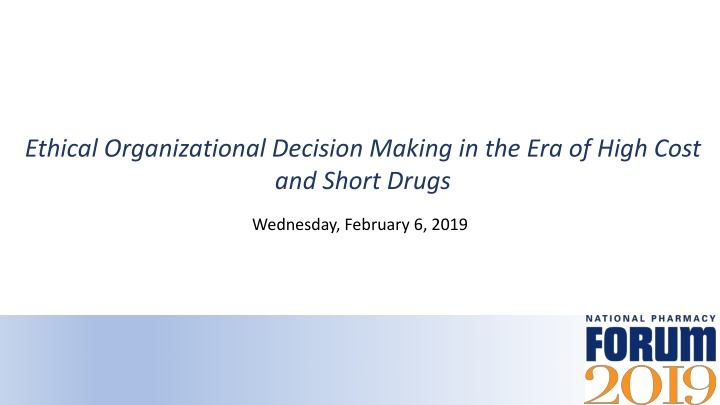
Ethical Organizational Decision Making in High-Cost Drug Context
Explore ethical decision-making in the realm of high-cost drugs, focusing on characteristics, treatment decisions, and supply chain optimization. Dive into a case study involving a patient with metastatic cancer facing financial and treatment dilemmas.
Download Presentation

Please find below an Image/Link to download the presentation.
The content on the website is provided AS IS for your information and personal use only. It may not be sold, licensed, or shared on other websites without obtaining consent from the author. If you encounter any issues during the download, it is possible that the publisher has removed the file from their server.
You are allowed to download the files provided on this website for personal or commercial use, subject to the condition that they are used lawfully. All files are the property of their respective owners.
The content on the website is provided AS IS for your information and personal use only. It may not be sold, licensed, or shared on other websites without obtaining consent from the author.
E N D
Presentation Transcript
Ethical Organizational Decision Making in the Era of High Cost and Short Drugs Wednesday, February 6, 2019
Panelists Jeni Hayes, PharmD, MSPharm, BCPS Clinical Pharmacy Specialist, Outcomes Management, Medical University of South Carolina Andrew Shuman, MD, FACS Co-Director, Program in Clinical Ethics; Chair, Adult Ethics Committee and Consultation Services University of Michigan Yoram Unguru, MD, MS, MA Division of Pediatric Hematology/Oncology Samuelson Children s Hospital at Sinai; Chairman, Sinai Hospital Ethics Committee; Core Faculty Member Berman Institute of Bioethics, Johns Hopkins University Steven Lucio, PharmD, BCPS (moderator) Vice President, Center for Pharmacy Practice Excellence Vizient
Objectives Identify characteristics of high-cost drugs and therapeutic areas where cost of therapy plays a major role in treatment decisions. Describe the time, resource burden, and infrastructure necessary to make ethically appropriate, individual treatment decisions for high- cost drugs. Summarize approaches for allocating limited medication supplies resulting from a manufacturing shortage. Justify various strategies that could be employed to optimize the supply chain for essential medications
Objective 1: Identify characteristics of high-cost drugs and therapeutic areas where cost of therapy plays a major role in treatment decisions. Case 1: Eric
Eric Eric is a 46 year-old man with metastatic cancer refractory to first-line treatment. He is now admitted with severe pain and inability to ambulate due to bone metastases. He began palliative radiation yesterday for pain control, with the goal to resume walking and to participate in self-care at home. His prognosis is poor, but he remains interested in pursuing additional treatment if it might prolong life. The treatment team is considering a targeted monoclonal antibody for additional systemic treatment. The drug is expensive, and efficacy data is limited in this specific clinical context. The drug is usually initiated in the outpatient setting, and is not on the inpatient formulary.
Eric It is uncertain when he will be able to move towards discharge. Thus, his clinicians are considering whether to initiate the therapy in the hospital. However, they have deferred initiation of inpatient therapy until the financial issues (both inpatient and outpatient) can be addressed. The patient is very angry. How can you put hospital profits ahead of my life? I need this drug NOW!
Objective 2: Describe the time, resource burden, and infrastructure necessary to make ethically appropriate, individual treatment decisions for high-cost drugs. Case 2: Wanda
Wanda Wanda is a 63 year-old woman admitted through the emergency room with anemia. She is soon diagnosed with an aggressive hematologic malignancy. The optimal treatment regimen involves a new biologic drug which is quite expensive. The protocol involves continuation of this drug for months after her initial cancer treatment is concluded. Wanda works in a factory, and has medical insurance with very limited prescription drug coverage. It is unclear how this medication would be covered in the outpatient setting.
Wanda Her clinicians wonder if it would be appropriate to integrate this drug into her treatment regimen if she may not be able to continue on it according to the established protocol. Ideally, her treatment should begin quickly... before the financial issues can likely be resolved.
Objective 3: Summarize approaches for allocating limited medication supplies resulting from a manufacturing shortage. Case 3: Vincristine
Vincristine You are a pediatric oncologist at a busy center that provides both inpatient and outpatient chemotherapy infusions. Despite the growing number of drug shortages, to date, your institution has been able to secure adequate chemotherapy agents. This morning, you learned that by the end of the week your hospital will have used the last available dose of vincristine The chemotherapy pharmacy director does not foresee securing additional supply through the various mechanisms the hospital has previously utilized, as the primary supplier of vincristine has halted all production resulting in a national shortage.
Vincristine Reviewing the current patient census, you note a number of children who will require vincristine in the coming months ALL, CNS astrocytoma, ES, medulloblastoma, neuroblastoma, RMS, & Wilms tumor All patients require the same 1.5 mg/m2 dosage, but given their different body surface area and disease type, some patients will require a higher dose while others will require more frequent dosing. Some of the children are research participants receiving vincristine as part of a clinical trial while others are receiving it as part of standard of care. How should your center allocate its available supply of vincristine?
Objective 4: Justify various strategies that could be employed to optimize the supply chain for essential medications. What can be done to address these challenging situations?


